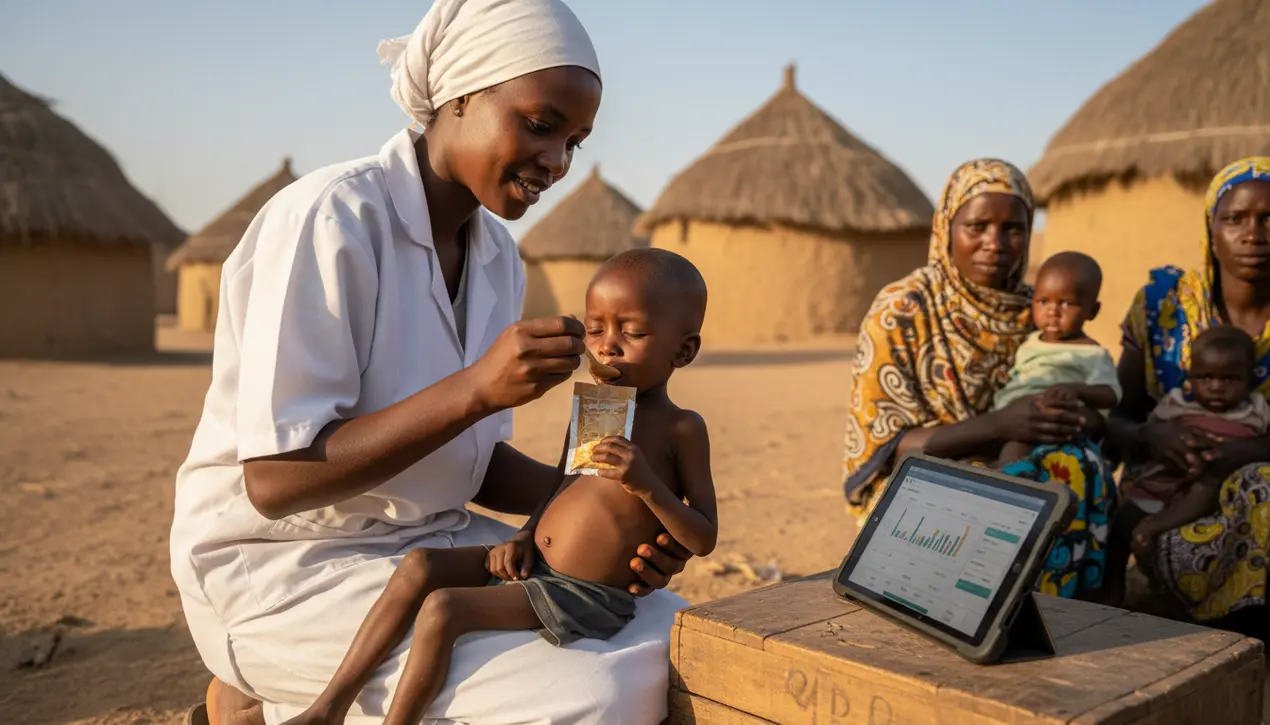
SciencemedicineGlobal Health Policy
You can keep a child from starving for less than $100
RA
Rachel Adams
2 hours ago7 min read
The haunting specter of famine returned with brutal force this year, with declarations in Sudan and Gaza marking the first official famines since 2017. As images of emaciated children circulated globally, a familiar, helpless question arose among Western observers: What tangible action can we possibly take for starving children thousands of miles away? While political advocacy remains crucial, its slow-moving machinery often fails to meet the urgency of a hunger crisis.In the 21st century, famine is increasingly understood not as an inevitable natural disaster but as a policy choice, a weaponized consequence of conflict where borders are closed and aid is deliberately blocked. This reality creates a profound moral quandary for the individual, forcing a confrontation with the limits of political and financial influence in the face of immense suffering.Yet, within this bleak landscape, a quiet revolution in global health offers a startlingly direct and effective path for action. The breakthrough lies in the treatment of Severe Acute Malnutrition (SAM), the leading cause of childhood mortality worldwide, claiming around 2 million young lives annually.The cornerstone of this treatment is a simple, vitamin-fortified, peanut-based paste known as Ready-to-Use Therapeutic Food (RUTF). This innovation is remarkably effective, allowing dangerously underweight children to gain health rapidly because it's densely caloric, packed with essential nutrients, and easily digestible even for fragile systems.However, the traditional clinical model for administering this treatment, reliant on doctors and nurses in hospital settings, has been prohibitively expensive, costing around $251 per child in regions like Nigeria. This high cost has created a devastating treatment gap, leaving over 75 percent of malnourished children without access to the care they need.It is precisely this gap that innovative organizations like Taimaka, the Alliance for International Medical Action (ALIMA), and the International Rescue Committee (IRC) are determined to bridge by radically re-engineering the delivery system for maximum efficiency and scale. Taimaka’s model, for instance, is a masterclass in pragmatic, evidence-based adaptation.By employing a strategy known as 'task-shifting,' they train community health workers—local individuals with less specialized but sufficient training—to diagnose and treat malnutrition at the village level. This eliminates the often-impossible journey to a distant hospital for desperate families.They further enhance this model by digitizing the entire process; health workers use tablets to triage patients and record data, which slashes administrative time and provides real-time, high-quality data for program management and research. Most impressively, Taimaka embraced recent gold-standard research from ALIMA that demonstrated children recover just as effectively with a tapered dose of RUTF, contradicting the older, more expensive protocol of increasing the dose as a child gains weight.By integrating these three innovations—community-based care, digitization, and optimized RUTF dosing—Taimaka has driven the cost of treatment down to a mere $94 per child, with a stunning 95 percent recovery rate. When extrapolated to the metric of lives saved, accounting for the fact that not every treated child would have died, the organization estimates the cost of saving a single life falls between $1,500 and $4,500.This places it among the most cost-effective humanitarian interventions in the world, rivaling the legendary efficiency of top-tier malaria prevention programs. Of course, such ambitious estimates are scrutinized.GiveWell, the rigorous charity evaluator, notes the inherent difficulty in gathering causal data on life-saving impacts in malnutrition, as ethically you cannot withhold treatment from a control group. Questions about relapse rates in areas of chronic food insecurity also introduce uncertainty.Yet, even with these considerations, the consensus is that this represents an extraordinarily good bet, leading GiveWell to grant Taimaka funds for expansion. This work highlights a critical, often overlooked distinction in global aid: the difference between humanitarian response in headline-grabbing famines and development work in contexts of chronic, quiet hunger.As ALIMA’s Dr. Susan Shepherd poignantly states, 'The most neglected child is the malnourished child who's not living in a CNN emergency.' There is a donor preference for preventative measures, which are clean and final, over treatment, which can feel like a stopgap. But malnutrition is a wicked problem, a vicious cycle intertwined with infectious disease, poverty, and poor infrastructure.Solving its root causes is the work of generations—a long-term project of continental development. Meanwhile, a child dies from acute malnutrition every 15 seconds.Treating these children is not merely charity; it is a vital investment in human potential. Research shows that repeated episodes of malnutrition can cause irreversible neurodevelopmental damage, lowering academic performance and lifelong earning capacity.By saving a child from starvation today, we are not just preserving a life but protecting a future, ensuring that a generation can grow to contribute to the stability and prosperity of their communities. While we must never cease demanding political solutions to man-made famines, we now possess the knowledge and the tools to act directly, to reach past the headlines and into the quiet villages where children are suffering.For less than the cost of a nice dinner, we can provide a full course of life-saving treatment. The power to prevent a child from starving is, astonishingly, within our immediate grasp.
#malnutrition
#famine
#child hunger
#effective charity
#RUTF
#Taimaka
#global health
#featured
Stay Informed. Act Smarter.
Get weekly highlights, major headlines, and expert insights — then put your knowledge to work in our live prediction markets.
Related News
Comments
Loading comments...
© 2025 Outpoll Service LTD. All rights reserved.